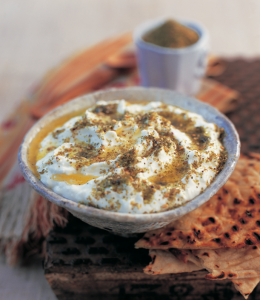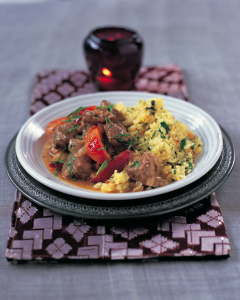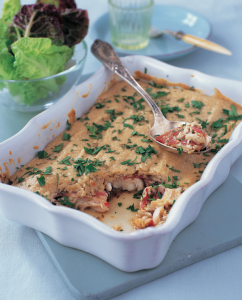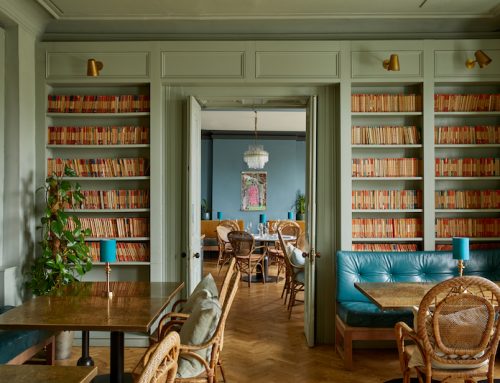Foreign travel. That’s something we aren’t ‘allowed’ at the moment, so I thought it appropriate to offer you a virtual visit to Lebanon – by way of a lovely new cookbook that’s just been published in time for Christmas. Written by acclaimed writer, broadcaster and food anthropologist Gillie Basan, The Lebanese Cookbook is published by Lorenz Books at £20 for a hardback tome that take you, the reader, out of our current locked down lives. It will take you on a journey with the food of Lebanon, Syria and Jordan; it dips into the history as well as modern life. The book will also make a memorable Christmas present for any foodie.
According to Gillie “If there is one thing that can unite communities it is food: There are Muslim feasts and Christian celebrations, Jewish and Armenian traditions, Palestinian communities and Arab heritage – there’s a little bit of everything under this vast culinary roof.” The culmination of years of research, this fascinating book also looks in detail at the history and geography, the customs and festivities, as well as all the local ingredients. It presents a mouth-watering selection of classic recipes, all beautifully photographed. It is certainly the next best thing to a foreign trip at the moment!
I’ve selected a few recipes from the book for you to try: a tasty dip that has all the flavours of the eastern Med; a warming lamb stew that’s perfect for a cold November evening and a really delicious fish bake. I adore tahini, and this is such an easy, but tasty, dish; you can include fresh or frozen fish.

Village cheese and labneh dip with zahtar Serves six
Jibne wa labneh is thick, creamy and slightly sour, a combination of local cheese and labneh. If you want to make your own labneh you just need to tip full-fat yogurt into a piece of muslin, tie the ends and suspend it over the tap in the kitchen sink for 12 hours so that it drains and reduces in quantity by half. In the villages of the eastern Mediterranean region people do this every day, then use it in different ways, like this dip made with the village feta-style cheese.
250g/9oz feta cheese, or other soft, salty cheese
250g/9oz labneh (made from strained thick yogurt, see below)
30ml/2 tbsp olive oil
15ml/1 tbsp zahtar
Drain and rinse the feta cheese and pat dry with kitchen paper. Place the feta in a bowl and mash it well with a fork. Using a wooden spoon, beat the strained yogurt (labneh) into the mashed feta to form a thick paste.
Spread the mixture in a shallow dish and drizzle the olive oil over the top. Sprinkle the zahtar over the top and serve with toasted bread.
For the labneh:
450g/1lb thick, creamy Greek-style (strained plain) yogurt
2.5ml/½ tsp sea salt
To prepare the labneh, beat the yogurt with the salt and tip it into a piece of muslin lining a colander, suspended above a bowl. Fold or tie the cloth over the yogurt and leave it to drain in a cool place or the refrigerator for about 12 hours. Pour off the whey that collects in the bowl. The yogurt will reduce to half the original amount (roughly 225g/8oz) and be the consistency of cream cheese.

Lamb and plum stew Serves four to six
Inspired by the Persian tradition of combining meat with fruit, the medieval Arabs created a number of dishes that are regarded as classics today. Common meat and fruit combinations include lamb or chicken with plums, apricots, grapes, cherries and quinces. This one is called yakhnit al-khawkh. Serve the stew with a buttery pilaff, perhaps flavoured with saffron or herbs.
30ml/2 tbsp ghee, or olive oil with a knob or pat of butter
2 onions, finely chopped
2–3 cloves garlic, finely chopped
5ml/1 tsp cumin seeds
5ml/1 tsp coriander seeds
500g/1¼lb lean lamb, cut into cubes
plain flour, for coating
400ml/14fl oz chicken stock
350g/12oz plums, stoned and quartered
sea salt and ground black pepper
a small bunch of fresh mint leaves, finely shredded, to garnish
pilaff, to serve
Heat the ghee in a heavy pan and cook the onions until they begin to colour, then add the garlic, cumin and coriander seeds. Coat the lamb in flour, then add to the pan to brown. Pour in the stock, bring to the boil, reduce the heat, cover the pan and simmer for about 40 minutes.
When the meat is tender, add the plums to the stew and season with salt and pepper. Cover the pan again and simmer for a further 20 minutes, until the plums are soft.
Transfer the stew to a warmed serving dish, garnish with the shredded mint, and serve. Accompany it with a buttery pilaff.

Fish baked in tahini sauce Serves four to six
If you like the taste of creamy tahini – sesame paste – you will love this dish, tajin samak bi tahina. It is incredibly simple, garlicky and lemony – a delicious way to enjoy any firm-fleshed fish. Tahini is found in many dishes, blended into dressings, dips and sauces.
300ml/½ pint tahini (light or dark)
150ml/5fl oz lemon juice
150ml/5fl oz water
2 cloves of garlic, crushed
15–30ml/1–2 tbsp olive oil
2 onions, halved and sliced
5–10ml/1–2 tsp cumin seeds
500g/1¼lb fish fillets, such as sea bass, haddock or trout, cut in half
sea salt and ground black pepper
a bunch of fresh flat leaf parsley, finely chopped, to garnish
Preheat the oven to 160°C/325°F/Gas 3. In a bowl, beat the tahini with the lemon juice and water to form a smooth, creamy sauce – it will thicken with the lemon juice at first but then thin down with the water. Beat in the garlic and season to taste.
Heat the oil in a heavy frying pan and sauté the onions with the cumin seeds, until they begin to turn golden brown.
Spread half of the onion mixture in the base of an ovenproof dish, lay the fish fillets on top, then spread the rest of the onion mixture over the fish. Pour the tahini sauce over the fish and bake in the oven for 25–30 minutes, until the fish is cooked. Sprinkle the dish with the chopped parsley, and serve immediately, with a salad and chunks of bread to mop up the sauce.




